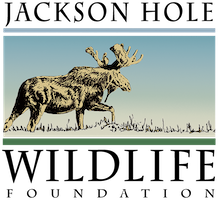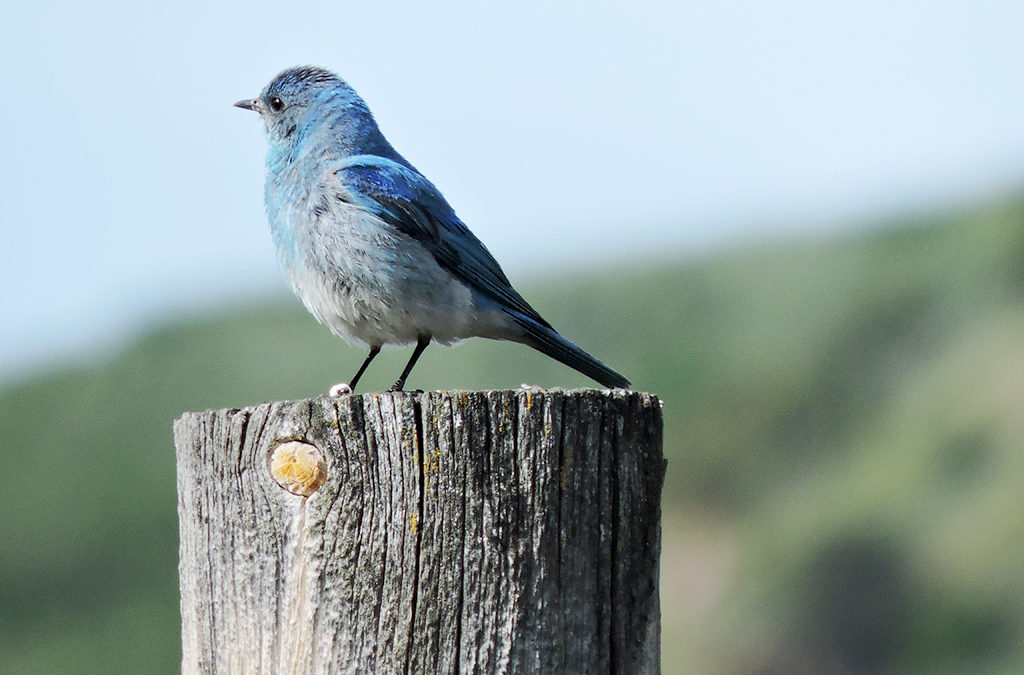
by jhwildlife | Jul 12, 2017 | Blog, Nature Mapping Jackson Hole
As one leaves the town of Jackson and heads north on HWY 89, a trail of nestboxes lines the fencing of the National Elk Refuge. These nestboxes are part of JHWF’s Mountain Bluebird Nestbox Monitoring Project, which is designed to mitigate for extreme habitat loss that has negatively impacted the breeding success of this species. Monitoring work has been conducted for the past 13 years, but this summer we added a new element to the project by hiring bird bander Allison Swan. With help from our volunteers, Allison has banded 98 chicks and 1 female adult since May.
With data collected through banding and the re-sighting of individuals, we will be able to evaluate survival rates of young, dispersal patterns, re-nesting rates, productivity by age, site fidelity, and other measures of population dynamics. This type of information will allow us to understand population status in Jackson Hole and to better inform land management decisions with respect to the Mountain Bluebird.
Almost all chicks born this summer have fledged their nests and now is the time to begin searching for our color-banded birds — 99 in total.
Already several banded birds have been re-sighted through the use of binoculars and spotting scopes. Our first sighting was a juvenile Mountain Bluebird who crossed the highway and was seen in the parking lot of the National Museum of Wildlife Art. Fledglings can fly quite well, but many are still being fed by the adults, which means they will often stay in place long enough to get a good look at colored-bands on their legs.
All Nature Mappers, we need your help re-sighting banded bluebirds! The most important data we need collected is location data and the color band scheme for each bird. Ideally, we would also like to collect additional data on behavior, substrate and plumage.
The color bands are noticeable and folks have been reporting that it is easy to read the colors, especially with use of binoculars. If you do not have binoculars, please stop by the Jackson Hole Wildlife Foundation office and borrow a pair! We have three scopes and two pair of binoculars for volunteers to borrow while conducting observations.
Download our Re-sighting Datasheet here. As you observe and record sightings of this year’s birds note each ones unique color combination. Datasheets should be given to our Associate Director, Kate Gersh at: Kate@jhwildlife.org. We also encourage the sharing of verbal reports by calling our office at: (307) 739-0968.
Thanks for the help!
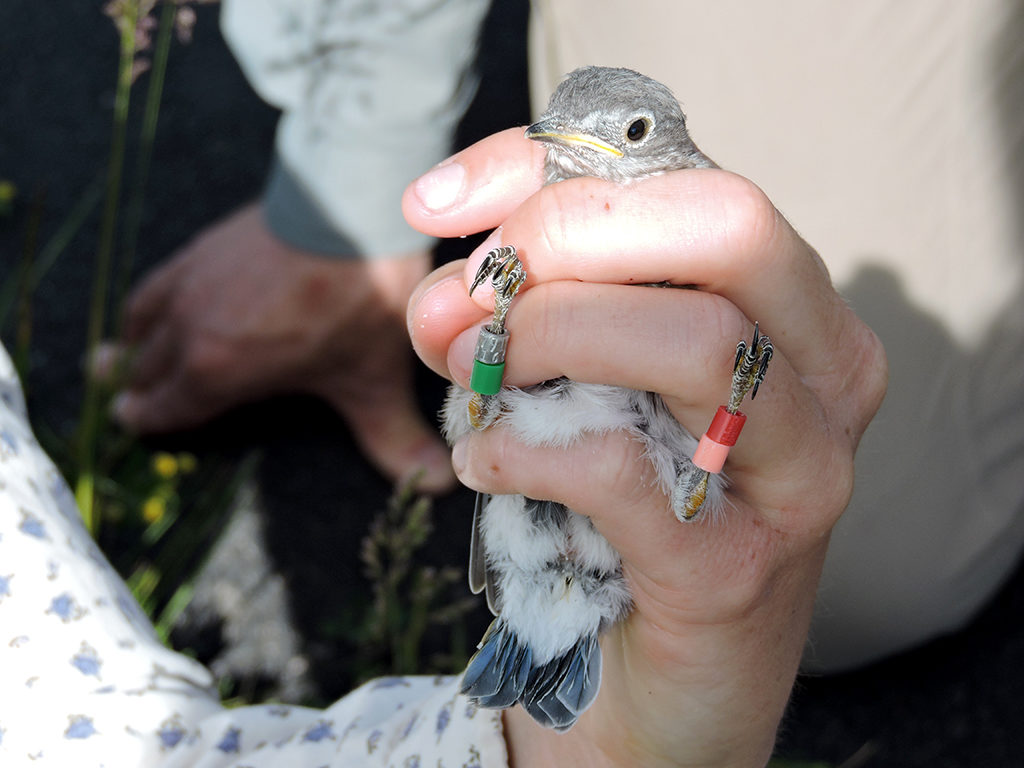
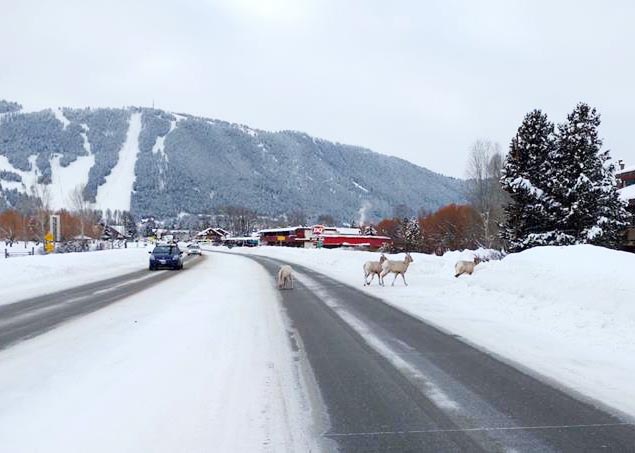
by jhwildlife | Jan 30, 2017 | Blog, Give Wildlife a Brake, Nature Mapping Jackson Hole
Our collective Nature Mapping observations create a long-term dataset of wildlife distribution throughout Jackson Hole. The obvious benefit is that these data provide a more comprehensive view of how wildlife use the valley. The less obvious product of the database is that it includes data that show us how human presence affects wildlife, often in the form of wildlife mortality. The most common reference source for human-caused wildlife mortality is the Jackson Hole Wildlife Foundation’s Wildlife-Vehicle Collision Database. It contains data derived from WYDOT and Wyoming Game & Fish carcass and crash counts, but also includes Nature Mapping observations from citizens who report roadkill to JHWF at 307-739-0968, or enter their roadkill observations directly via their Nature Mapping account. All of these records eventually are cross-checked to remove duplicates. It is an important resource, adding to our local knowledge, and helping to inform county-wide plans to find solutions that save wildlife and make our highways safer for drivers.
The Wildlife-Vehicle Collision (WVC) Database captured 259 collisions in 2015. Data for the 2015 update was acquired from the following data sources: Wyoming Department of Transportation – Carcass (118), Wyoming Department of Transportation – Crash (70), Wyoming Game and Fish Wildlife Observation System (33) and Nature Mapping Jackson Hole (28). In total, the WVC database contains 46 total species with mule deer, white-tailed deer, elk and moose being the most prominent species involved in WVCs.
The below map shows where the most frequent collision points are on the local highway network. The highlighted areas had the highest number of collisions from 2013-2015. During this intense winter of 2016-2017, these data have helped us to pinpoint places to add emergency mitigation measures. If you see a dead animal on the side of the highway – small mammals and rodents as well as ungulates – please enter it into the Nature Mapping database, or call us at 307-739-0968 with precise location and time and our staff will enter it. We are likely underestimating the number of animals struck on the highways – certainly for non-ungulates – and our future solutions will depend on our ability to accurately capture what is happening on the roads. Thank you for your help!
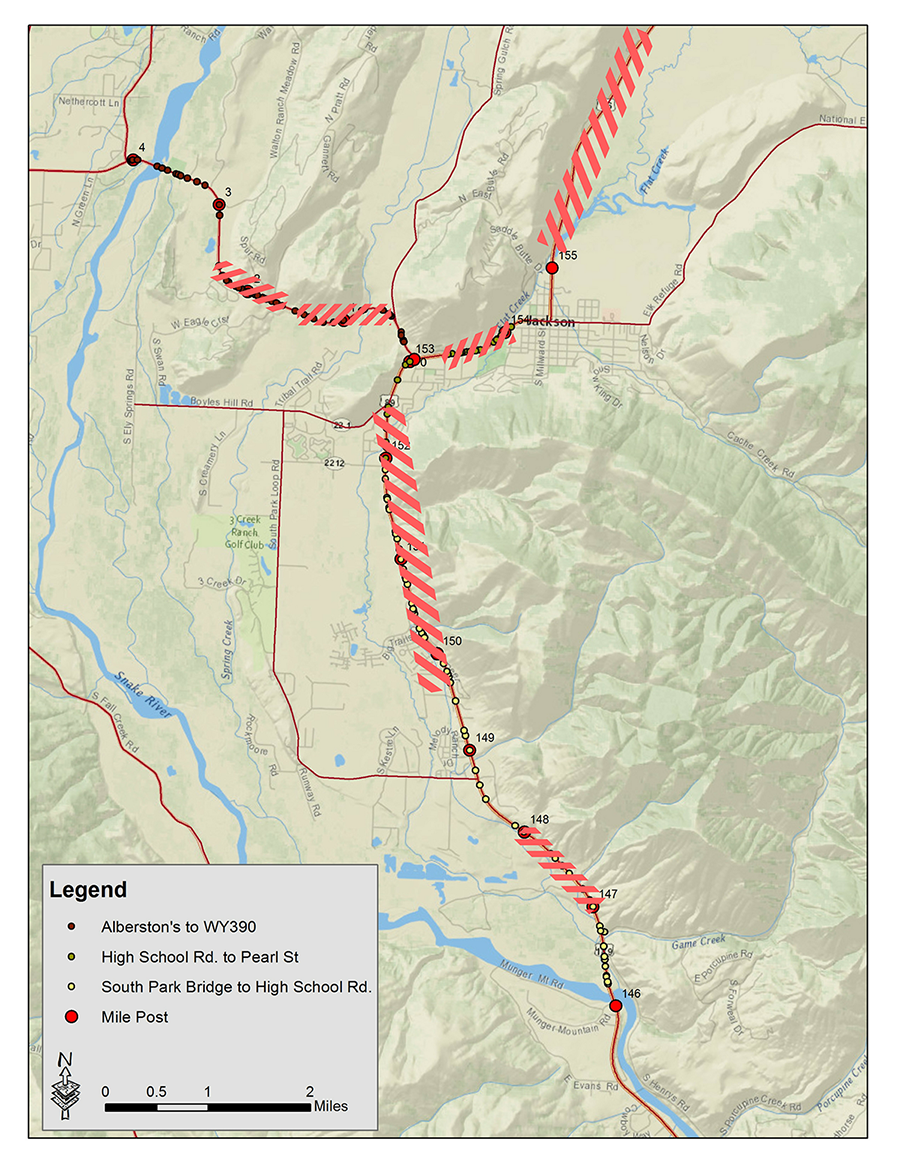
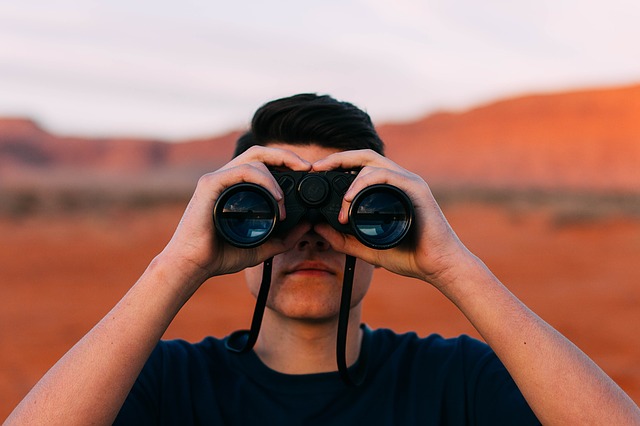
by jhwildlife | Oct 17, 2016 | Blog, Nature Mapping Jackson Hole
Registration is now open for the first ever Wyoming Citizen Science Conference! Hosted by the UW Biodiversity Institute, the conference will involve keynote and breakout sessions that guide program managers and citizen science participants (teachers, Scout leaders, community activists, etc.) to weigh in on what works well (and what doesn’t) in terms of having a successful, impactful citizen science program. The conference will be held in Lander, Wyoming, on December 1-2, 2016, and with an optional day on Saturday, December 3 to attend focused workshops.
We hope you can join us. The Jackson Hole Wildlife Foundation will be in attendance to represent Nature Mapping Jackson Hole – delivering two oral presentations and presenting two project posters in addition to, screening the film Far Afield. We’ll mainly be talking about lessons learned from the past eight years of Nature Mapping Jackson Hole, sharing our experiences and intending to learn much from others in attendance that will come from across the state. The organizers of this inaugural event hope to have a strong representation from active citizen scientists, not just those serving in professional capacities. Register today and come learn, share and be inspired!
Details on the conference agenda can be found here.
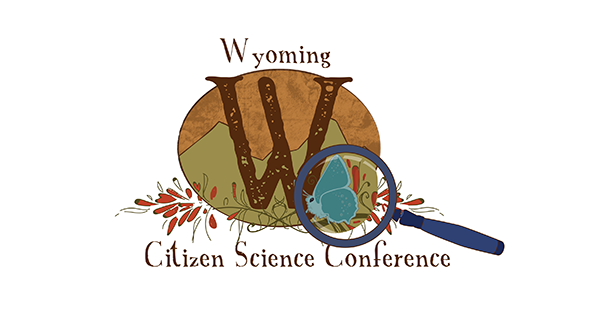

by jhwildlife | Sep 1, 2016 | Blog, Nature Mapping Jackson Hole
The Jackson Hole Wildlife Foundation (JHWF) is proud to support the 2016 Wyoming Citizen Science Conference! JHWF’s Associate Director, Kate Gersh, serves on its program planning committee. We are also supporting the conference as a silver-level sponsor. Taking place this coming December in Lander, the Wyoming Citizen Science Conference (hosted by the UW Biodiversity Institute) is the first of its kind in our state, and will focus on the problems and solutions that citizen science program managers and volunteers face when implementing and participating in programs. Wyoming in particular faces interesting and specific challenges when designing, delivering, maintaining and evaluating citizen science programs. How does the state’s rural population influence recruitment and retention? How does the remoteness of some study areas and the high diversity of plant and wildlife impact study design? How can we make citizen science accessible and useful to teachers? What laws and rules do we need to be aware of?
We anticipate approximately 200 attendees, including program organizers, educators and citizen science volunteers. JHWF staff and many of Nature Mapping Jackson Hole’s Scientific Advisory Committee members plan to attend and present. JHWF also encourages our community’s citizen scientists to directly participate in the conference by delivering presentations or workshops of your own accord. Download the call for proposals here.
Proposals are due Sunday, September 18, 11:59 pm MST. Submit the completed form in Word or PDF format to UW Biodiversity Institute Project Coordinator Brenna Marsicek at brenna.marsicek@uwyo.edu.
Also, please save the conference dates of December 1-3, 2016, in your calendars. We very much hope to see you at this unique event that will for the first time link our statewide efforts.



